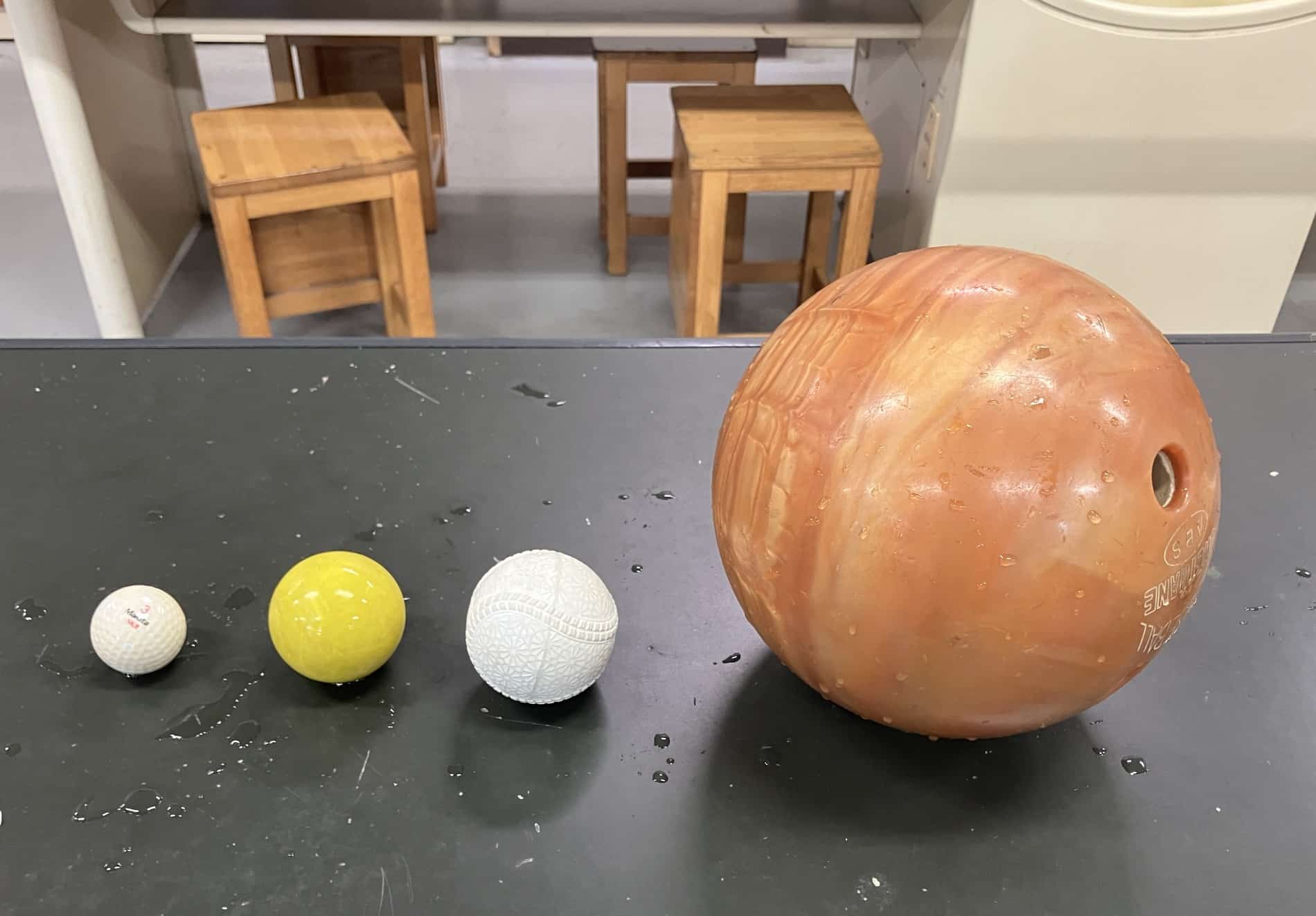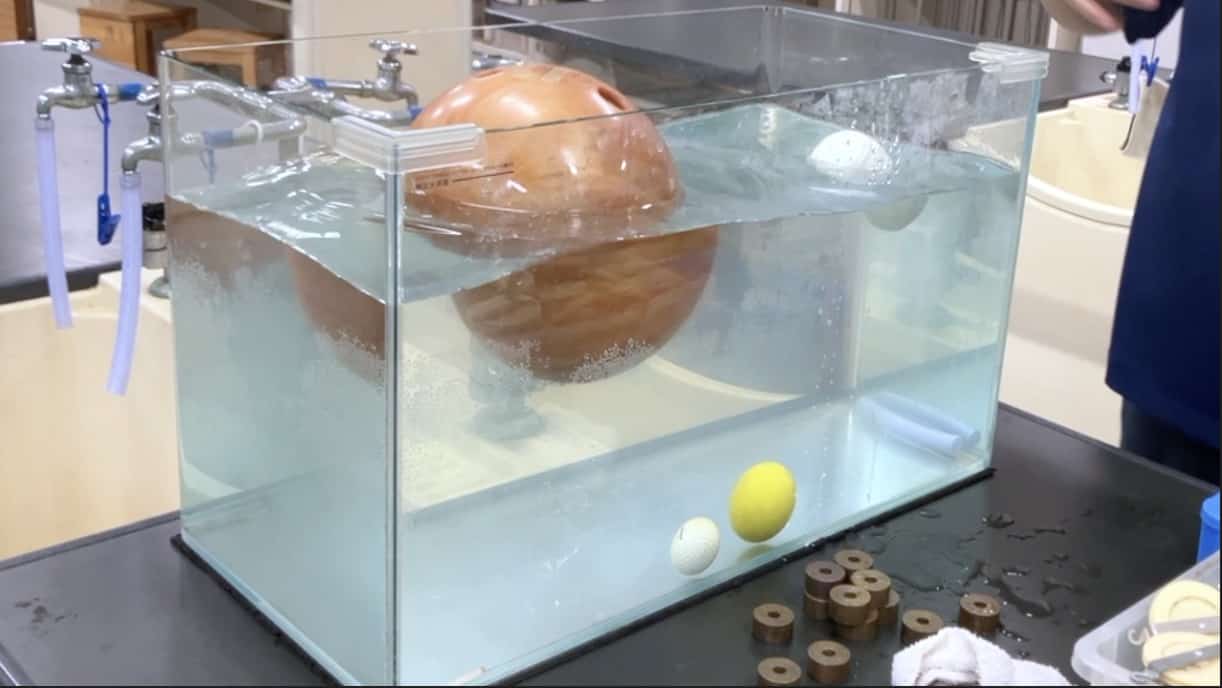Why a Heavy Bowling Ball Floats (and a Golf Ball Sinks): The Surprising Science of Density
I’m Ken Kuwako, a Science Trainer. Every day is an experiment.
The Great Ball Float-or-Sink Challenge!
For this challenge, we’ve gathered four types of balls: a golf ball, a lacrosse ball, a rubber baseball, and a bowling ball. Now, which of these do you think will float in water? Make your prediction in your head. Thinking time starts… NOW!

The answer is… the result of our actual experiment is in this video:
The balls that actually floated were, surprisingly, the rubber baseball and the bowling ball! Did you get your prediction right?

I can already hear the gasps: “Wait, a bowling ball?! How can something that heavy float!?” That phenomenon—floating despite being heavy—is exactly what makes this experiment so fascinating. This counter-intuitive result teaches us that the relationship between “weight” and “floating/sinking” is actually much more profound than we might initially think.
※ P.S. I learned about this experiment from Professor O. I was amazed that they went to the trouble of acquiring a bowling ball just to try it out!
It’s Not Just About Weight! The Secret of Buoyancy
The bowling ball is the key ingredient here. Bowling balls use the unit of “pounds” for weight, and in fact, some pounds of balls will float, and some won’t. Even for bowling balls of the same size, if the weight and the volume relative to that weight differ, the buoyancy is affected.
While bowling balls look almost identical in size, their weight (in pounds) varies significantly, right? This is because the weight is adjusted by changing the density of the materials inside the core of the ball.
Bowling balls are standardized to a diameter of approximately 21.8 cm (a circumference of about 68.6 cm). Because of this, the “volume” of the ball is nearly constant regardless of its weight in pounds. The table below compares the mass and the calculated density for common weights of bowling balls.
Bowling Ball Comparison Table: Pounds, Mass, Volume, and Density
The point is that while a bowling ball looks heavy, some of them have internal cores with intentional voids or specially formulated materials, making their density surprisingly lower than water. In contrast, golf balls and lacrosse balls are small but packed solid, giving them a greater density than water, which is why they sink.
That’s the beauty of science: simply scaling up an experiment with everyday objects can lead to incredibly interesting and thought-provoking scientific discoveries. I encourage all of you to try the “Will it float or sink?” test with objects you find around you. New discoveries are surely waiting!
Contact and Request Information
Bringing the wonders and fun of science closer to you! We’ve compiled easy-to-understand guides on fun science experiments you can do at home and tips on how to perform them. Feel free to search around! ・About the Operator, Ken Kuwako: Click Here ・For Various Requests (Writing, Lectures, Science Workshops, TV Supervision, Appearances, etc.): Click Here ・Article updates are posted onX!
![]() Experimental videos are available on the Science Topics Channel!
Experimental videos are available on the Science Topics Channel!


